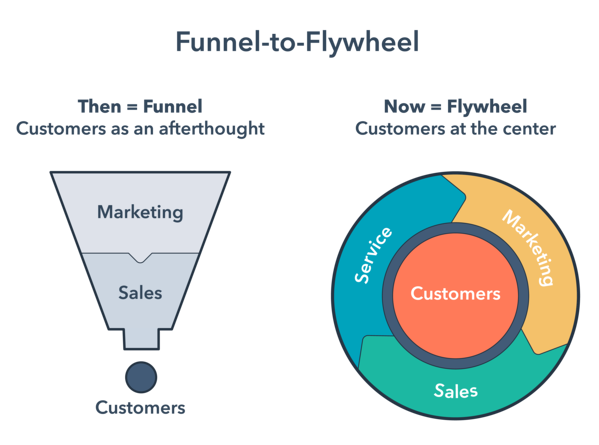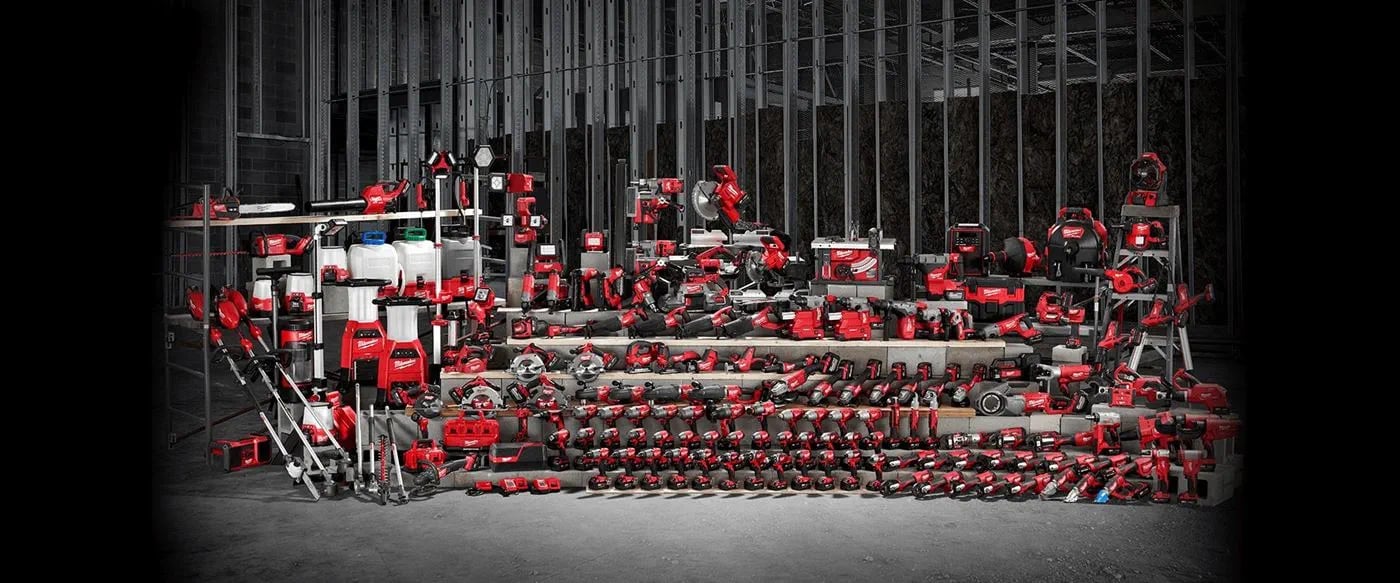
Flywheels have long been seen in mechanical systems—from the earliest steam engines to the small motors that power residential lawn mowers. In fact, flywheel technology and its applications from as early as the Industrial Revolution to NASA’s modern space explorations show its capacity for solving some of the world’s most confounding technological challenges (1).
Naturally, it makes sense that the concept of flywheels has also been applied in a business context, some even going so far as to referring to the term as “business jargon.” In this article, thus, we seek to answer the question, “what is a flywheel in business.” We unpack how a flywheel works and contextualize flywheels with some real-world examples at some of the largest companies (e.g., Amazon). We’ll then offer a few secrets on how adopting a flywheel model in your construction company may give you a competitive edge while helping you build an antifragile company that’s more efficient with even fewer resources.
Jump Ahead:
How Do Flywheels Work?
Quite ingenious, the flywheel borrows from the field of physics, drawing on kinetic energy—i.e., the energy an object possesses in motion. Specifically, rotational energy (i.e., energy generated through angular momentum) is stored by the flywheel’s rotor. This kinetic energy is drawn when the flywheel reaches its moment of mass inertia (i.e., “the torque needed for a desired angular acceleration about a rotational axis, akin to how mass determines the force needed for a desired acceleration”).

“Creating power is actually fairly simple; storing power is hard,” explains Nate Walkingshaw, founder of renewable energy company Torus. Torus has introduced its Torus Flywheel™ to store kinetic energy that can be converted back into electricity, which in turn can be used as the disc gradually slows down.
Described in an excerpt of his book, Good to Great (2), Jim Collins discusses the appeal of the flywheel—i.e., although involving upfront exertion, delivering “almost unstoppable momentum”:
Picture a huge, heavy flywheel—a massive metal disk mounted horizontally on an axle, about 30 feet in diameter, 2 feet thick, and weighing about 5,000 pounds. Now imagine that your task is to get the flywheel rotating on the axle as fast and long as possible. Pushing with great effort, you get the flywheel to inch forward, moving almost imperceptibly at first. You keep pushing and, after two or three hours of persistent effort, you get the flywheel to complete one entire turn. You keep pushing, and the flywheel begins to move a bit faster, and with continued great effort, you move it around a second rotation. You keep pushing in a consistent direction. Three turns ... four ... five ... six ... the flywheel builds up speed ... seven ... eight ... you keep pushing ... nine ... ten ... it builds momentum ... eleven ... twelve ... moving faster with each turn ... twenty ... thirty ... fifty ... a hundred.
Then, at some point—breakthrough! The momentum of the thing kicks in in your favor, hurling the flywheel forward, turn after turn ... whoosh! ... its own heavy weight working for you. You’re pushing no harder than during the first rotation, but the flywheel goes faster and faster. Each turn of the flywheel builds upon work done earlier, compounding your investment of effort. A thousand times faster, then ten thousand, then a hundred thousand. The huge heavy disk flies forward, with almost unstoppable momentum.
What Is the Flywheel Effect? Explained: Collins Flywheel Meaning in Business
So, what is a flywheel in business? Jim Collins describes the “flywheel effect” as “a concept” and “process” that “resembles relentlessly pushing a giant, heavy flywheel, turn upon turn, building momentum until a point of breakthrough, and beyond.”

In other words, Collins explains, there is no defining moment or single innovation that catapults a small business into an unstoppable juggernaut, but rather, through this relentless momentum building, a business can eventually reach unstoppable momentum that will allow them to overcome random occurrences of momentary stress. A lesser, momentum-lacking company, meanwhile, may be put out of business due to routine chaotic events.
Scholarly research has been applied to the concept of the flywheel effect across industries. In Public Management Review, authors Fred Thomas and Polly Rizova liken business to an engine and government to the flywheel necessary to create public value (4).
In healthcare, flywheels and software products support services that make healthcare outcomes more affordable. In environmental research, the concept has been applied in an effort to understand clean energy storage (5), as well as to explore driving “nature-based solutions” for climate adaptation applied to the insurance industry (3).
Is flywheel energy storage efficient? The energy efficiency (ratio of energy out per energy in) of flywheels, also known as round-trip efficiency, can be as high as 90%.
Jim Collins Flywheel Examples
The flywheel business model popularized by Jim Collins can be seen in many successful, well-known global business entities.
Some examples include:
Amazon Flywheel
Amazon and Jim Collins are often believed to be synonymous. It is generally believed that, when Amazon was struggling early on during the dot com bubble, Collins, a management consultant and former Stanford University business professor, had advised a young Jeff Bezos—inspiring a sketch drawn on a napkin of what would become “Amazon’s flywheel.”

Image Source: omr.com
Described by OMR, Amazon’s flywheel follows this premise: “Setting growth at Amazon in motion […] is ensuring a positive customer experience, [which will] lead to an increase in customers, which, in turn, boosts the relevance for merchants. And when more merchants sell their wares on Amazon, the product offer increases, which has a positive impact on customer experience.” “And once those balls are rolling,” they add, the flywheel “would enable Amazon to reduce costs and simultaneously lower prices for customers, another net positive with regard to the customer experience.”
HubSpot Flywheel
Oftentimes within the context of business, the term “flywheel” is muttered within the same breath as HubSpot, a well-known software as a service (SaaS) company catering to small businesses by offering digital tools to help them scale their businesses.

Image Source: HubSpot
HubSpot built their own business around a flywheel which replaced the more traditional marketing funnel, and is described as such: “With the flywheel, you use the momentum of your happy customers to drive referrals and repeat sales. Basically, your business keeps spinning.”
HubSpot’s flywheel, unlike the traditional marketing funnel, puts customers at the center, with marketing, sales, and service supporting each other (and all in service of the customer), whereas the traditional marketing funnel is systematically flawed with “Customers as an afterthought.”
Apple Ecosystem
We have previously discussed the concept of a product ecosystem, with Apple world-famous for its customer-centricity and delightful cross-product compatibility that makes switching devices (e.g., listening to music on AirPods between iPhone, iPad, and MacBook) seamless. However convenient you find this “walled garden,” it also means the further you delve into the ecosystem, the harder it is to leave it.

Milwaukee Tool System-Wide Compatibility
Here at Milwaukee Tool, we too have one focus – the user. This unified focus has driven our disruptive innovation and commitment to system-wide compatibility, ensuring there’s a solution for every jobsite application you encounter on the same battery platform. With this relentless user focus a testament to our success, we’ve seen customers committed to the battery platform.

Shown: M18™ System-Wide Compatibility
Flywheel Business Model for Construction Companies
Now that we’ve discussed what flywheels are in a business context, how might you build your own?

Next, we’ll discuss the general components of a flywheel critical to building your own and how you can leverage the flywheel effect.
General Components of a Flywheel Business Model and How to Leverage the Flywheel Effect
A flywheel generally is made up of three components:
- Customer Acquisition – What is your method for acquiring new customers?
- This could be anything from responding to RFP/RFIs to how you market your business (e.g., word-of-mouth referrals, online marketing, social media, networking events, paid media, etc.)
- Customer Experience and Engagement – Once you’ve determined a way to acquire new customers, focusing on improving the customer experience is critical for both driving customer retention as well as turning your current customers into advocates (e.g., referrals).
- Examples of areas to focus on include improving customer relationship management through open communication and improving collaboration through BIM modeling, etc.
- Operational Excellence – Improving the capacity at which your team is able to deliver executables and exceed client expectations.
- Examples include focusing on building company-wide interoperability to improve real-time data sharing, transparency, and the team’s ability to collaborate cross-functionally with less data bloat; adoption of lean management principles to eliminate waste and refocus efforts to prioritize customer value; engaging offsite construction to help mitigate extenuating circumstances beyond your control (e.g., weather) and improve overall quality; supplying workers with smart tools that can deliver application-specific repeatability, standard Bluetooth® tracking compatibility for better inventory management and security, reporting for quality assurance purposes; etc.
Bottom Line
Flywheels are at work at the largest companies in the Fortune 500. While the construction industry is often dealt more than its fair share of business uncertainty, underpinning operational processes with a momentum-generating flywheel can help build antifragility into your business operations while your competitors become continually unstable to market uncertainties.
Things to keep in mind:
- Building a flywheel is a tremendous undertaking—it becomes increasingly difficult as you add employees, so starting this process early is critical.
- As you scale up, the need for resources (e.g., people, tools, equipment) grows to maintain the momentum.
References
- Bitterly, J.G. (1998, 08). Flywheel technology: past, present, and 21st century projections. IEEE Aerospace and Electronic Systems Magazine 13(8), 13-16. https://doi.org/10.1109/62.707557
- Collins, J. (2001). Good to Great: Why Some Companies Make the Leap and Others Don't. HarperBusiness.
- Costa, M.M., Marchal, R., Moncoulon, D., and Martin, E.G. (2020, 11). A sustainable flywheel: Opportunities from insurance’ business to support nature-based solutions for climate adaptation. Environmental Research Letters 15(11), 111003. https://doi.org/10.1088/1748-9326/abc046
- Thompson, F. and Rizova, P. (2013). Understanding and Creating Public Value: Business is the engine, government the flywheel (and also the regulator). Public Management Review 17(4), 565-586. https://doi.org/10.1080/14719037.2013.841982
- Wicki, S and Hansen, E.G. (2017, 09). Clean energy storage technology in the making: An innovation systems perspective on flywheel energy storage. Journal of Cleaner Production 162(20), 1118-1134. https://doi.org/10.1016/j.jclepro.2017.05.132